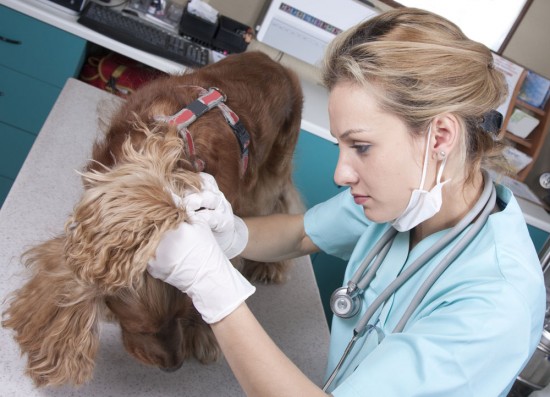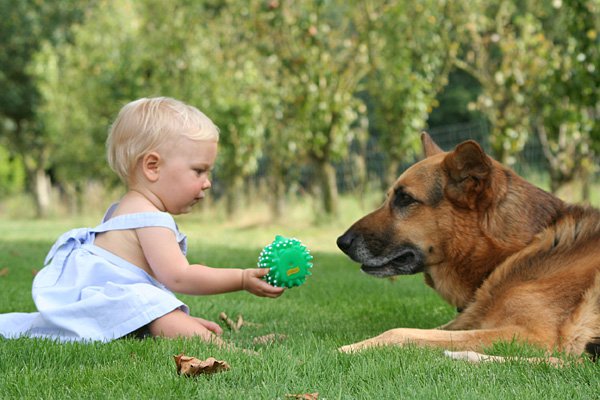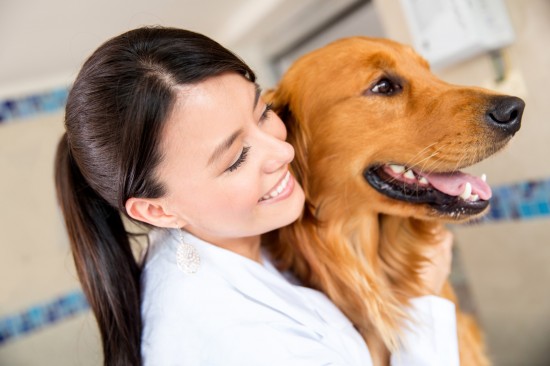One of the advantages of choosing a pure bred dog over a mixed breed, is that we can determine both physical and behavioural features of a pure bred dog. Standards are set and breeds must conform to these standards. As a result, when choosing a pure bred dog, we can expect the dog to be of a certain weight and height, and display pre defined behavioural characteristics, for example.
Breeding for a certain colour, look or personality also comes at a cost, and this cost comes in the form of inherited disease. One only has to look at the breed profile of any pure breed, and along with the usual information regarding, colour, size and character, and so on, there is usually a section regarding any inherited illness or disorder associated with the breed.
The variety of inherited disorders associated with pure bred dogs is staggering. Many of these disorders are of a serious nature, and can be life threatening to the dog in some cases. That said however, not every dog will develop an illness associated to it's breed, however, the potential for a disorder to manifest is possible.
This article discusses Intervertebral disk disease it's symptoms and treatment.
Intervertebral disk disease is a condition that can effect different dog breeds, both large and small, however, it is the "chondrodystrophic" types; smaller breeds who have skeletal disproportions, such as very short legs and long bodies, for instance The Dachshund, and those dogs with short faces, for example, the French Bulldog and The Pekineese,
The dogs back bone is made up of a number of vertebrae, that encase and protect the spinal chord. Between each vertebra are found the Intervertebral discs. These disks are located along the length of the spine; from the dogs head to the end of it's tail. The disks not only provide support and flexibility, but also helps to absorb shocks, when the dog is running, or jumps up and down, for example. The shorter the dogs limbs, the less the Intervertebral discs are able to absorb shocks.
The disks themselves are made up of a tough outer casing, (the annulus) and a soft, jelly-like interior (the nucleus). Due to the natural ageing process in many breeds, the Intervertebral Disks can degrade, resulting in back problems for the dog. However, in the case of the "chondrodystrophic"types described above, the Intervertebral disks can degenerate prematurely.
The degenerative process is characterised by the calcification of the nucleus, or interior of the disk, and the weakening of the annulus, or outer casing, causing all or part of the disk to squeeze free from the vertebra, and protrude upwards, causing compression of the spinal chord, thus interfering with it's normal functioning. Eventually, compression causes oxygen deprivation to the blood vessels, leading to damage and death of tissue cells in the spinal chord.
The condition may present itself almost immediately or over a period of time, for example, several days or weeks. A dog who has developed this condition will show various symptoms, depending on which area of the spinal chord has been affected. For example, a dogs who's neck area has been affected will be reluctant to move it's head, in any direction. The dog may be reluctant to rise, or walk due to pain caused by pressure placed on nerves in the spinal chord. Loss of appetite and the dog hiding itself away may also be evident.
If degeneration or herniation has affected the dogs mid or lower back, this is considered more serious. In this case symptoms will have normally presented themselves quite rapidly, and seemingly without cause. The dogs back may become arched, in addition to weakness in the rear limbs. This may culminate in the dog loosing control of bladder and bowel function, and in the most serious cases, total loss of sensation to the rear limbs.
The treatment for this condition will depend upon the extent of the damage, so early detection and diagnosis are paramount. The prognosis is often very good for dogs who have developed this condition. There are two methods of treatment one is medical management, through the use of pain killing and steroidal drugs. However, with this method of treatment, there is a small chance that the condition will reacure. The second method of treatment is to surgically remove the part of the spine that contains the collapsed disk (surgical decompression) usually within 48 hours of the onset of symptoms. The appropriate method will be determined following closer examination and testing of the affected area.
Following treatment, the dog will be expected to enter a period of rehabilitation, the time period for successful rehabilitation will vary in relation to the severity of the dogs condition, but in most cases a dramatic improvement can be observed within a couple of weeks.
In the case of dogs who's bladder functioning has been effected, owners will need to assist the dog to urinate, by way of massaging the bladder area. Care will need to be taken to keep the dog still for some time, as the pain killing drugs may cause the animal to want to get up and move around, and this could cause further problems, especially in the early stages of recovery. As the dog will not be moving much initially, owners will need to massage the dogs muscles, usually several times per day, to keep them in trim. Swimming is also excellent physiotherapy for the dog.
Given time and plenty of rest, plus regular medication, most dogs will make a full recovery, to the extent were they gain full functioning of their limbs. A small percentage of dogs will recover with only slight problems with walking, however, there will be a very small percentage of dogs that don't respond to either drug treatment or surgery, in these cases euthanasia is the kindest option for the dog.
Improvement within the breeds who are predisposed to this condition should be priority, in helping reduce the likely hood of this problem occurring in future generations. From an owners point of view however, as with all medical conditions, prevention is better than the cure. Owners of dogs who are predisposed to this condition should take appropriate steps in limiting the possibility of the onset of Intervertebral disk disease by giving their dogs regular exercise along with a balanced diet and not to allow their dogs to put on excess weight or become obese. Restricting excessive play activities jumping up and down on furniture and climbing stairs, will also help in reducing the stress placed on the dogs spine.

 Recognising Cancers And Tumours In Hamsters
Recognising Cance
Recognising Cancers And Tumours In Hamsters
Recognising Cance
 Tips to choose the most suitable Veterinarian
Tips to choose the most suitable Veterinarian
Tips to choose the most suitable Veterinarian
Tips to choose the most suitable Veterinarian
 Lyme Disease In Dogs
Lyme Disease In D
Lyme Disease In Dogs
Lyme Disease In D
 Advantage of Selecting the Right Dog Boarding Service for Your Pet
Advantage of Selecting the Right Dog Boarding Service for
Advantage of Selecting the Right Dog Boarding Service for Your Pet
Advantage of Selecting the Right Dog Boarding Service for
 10 Questions Dog Owners Should Ask Vets
10 Questions Dog
10 Questions Dog Owners Should Ask Vets
10 Questions Dog